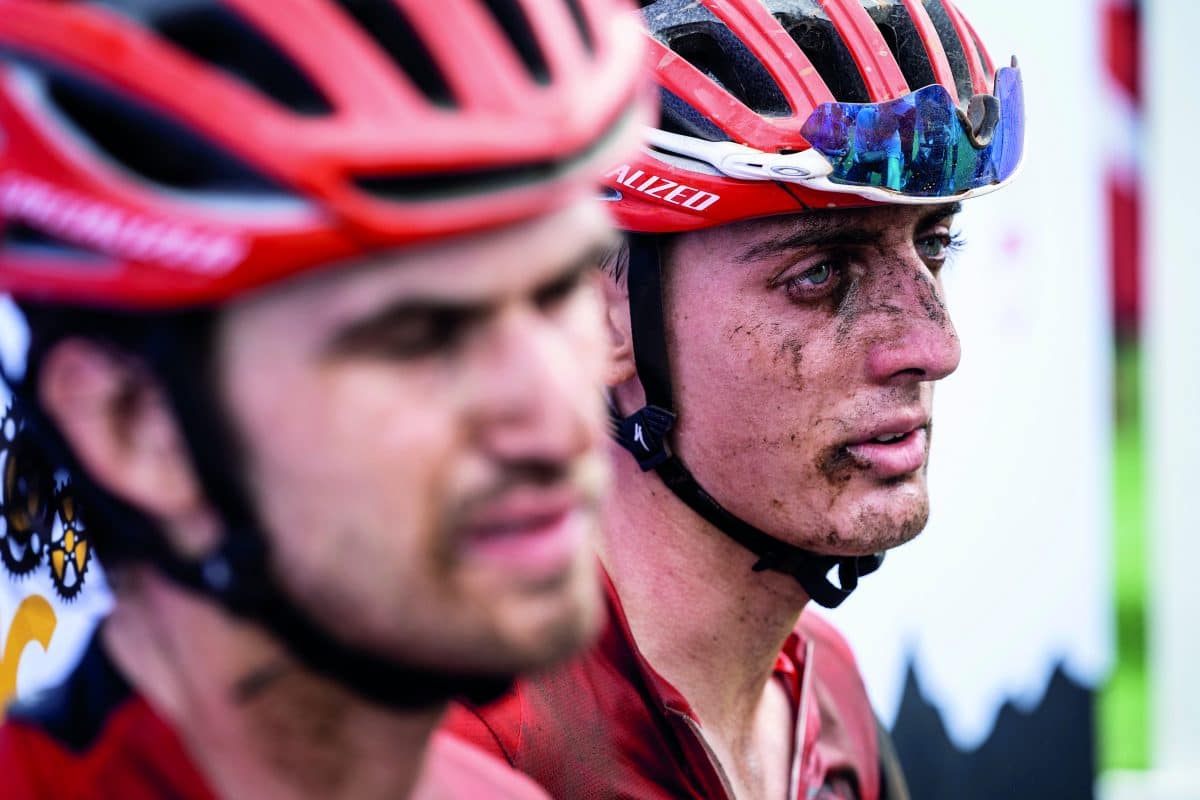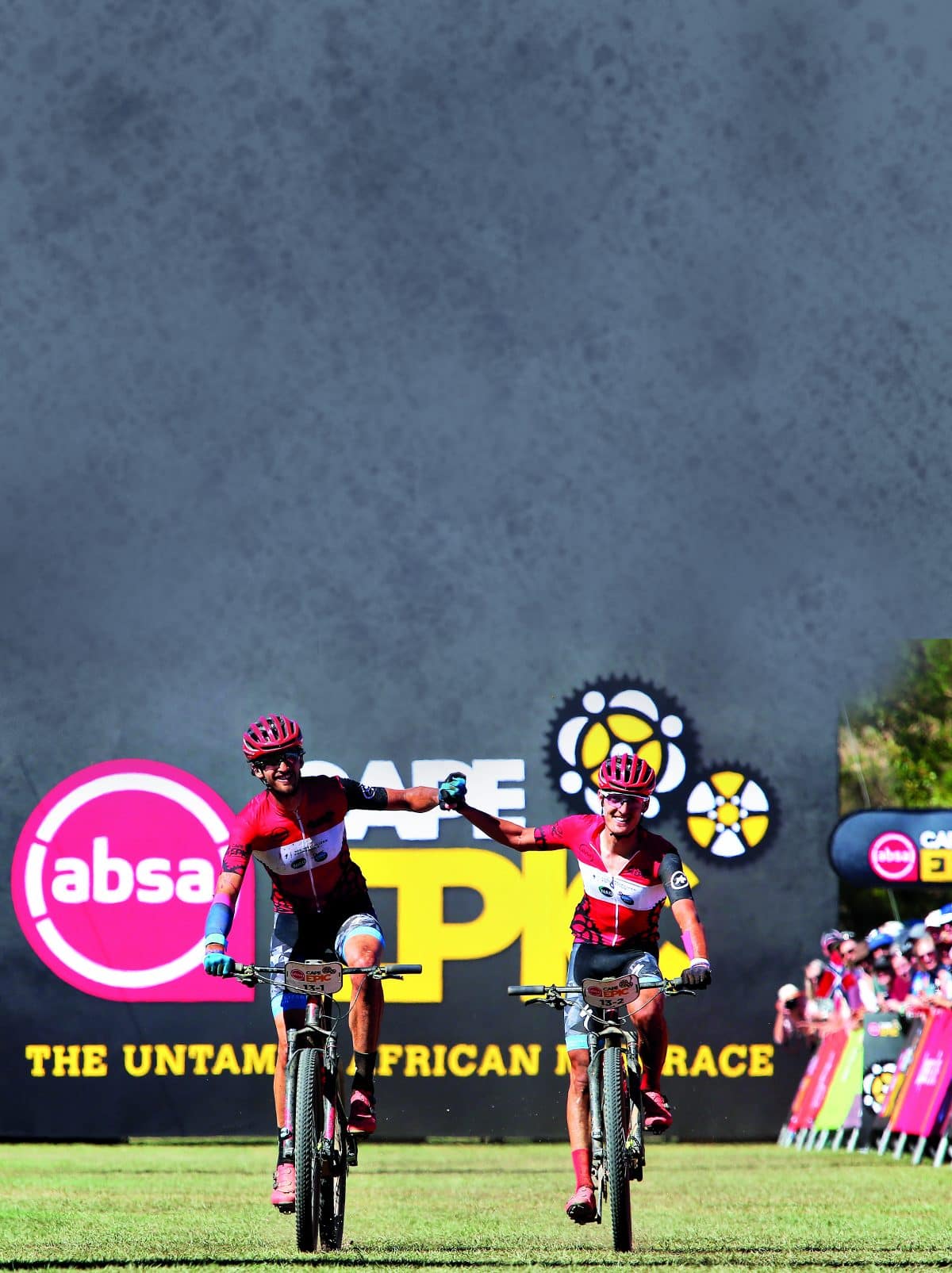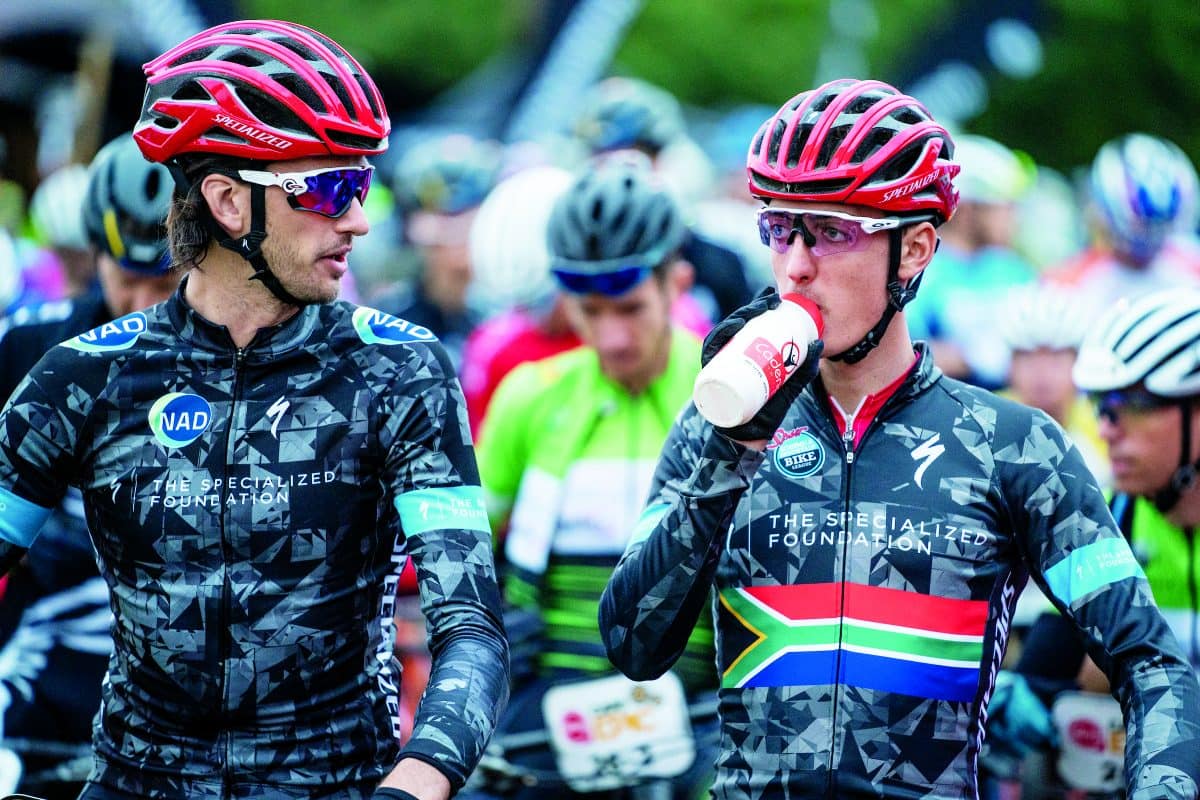Train Smart Like A Pro!
Training the world’s top cyclists is no easy task; but coach John Wakefield is making an impact with his methods – on the global scene. Here, he shares some of the pro secrets that will make you a better rider.
When you train some of the best cyclists in the world, says John Wakefield – coach to South Africa’s top cyclists, and to the UAE Team Emirates World Tour team – telling them that most of their training has to be ‘easy’ is the hardest job there is.
Wakefield may look more like an extra from the Trainspotting movie, but his passion for coaching is infectious; and his methods, honed by the team at the Sports Science Institute and his own cycling experience as a top age-grouper, are starting to be noticed internationally, and by teams outside of the UAE.
He’s also worked closely with SA’s current under-23 world champion Alan Hatherly and MTB marathon specialist Mark Beers, along with his new role as performance coordinator for the UAE team.
Here are the key principles that Wakefield uses to coach top athletes – and why they apply to every level of rider. This means YOU.
The 80/20 Principle
Most of the training Wakefield’s riders do is common to all; only 20% is spent focusing on specialist sessions. For Beers and Hatherly, 80% of their training time is long, slow distance, at a Rate of Perceived Exertion (RPE) of 3-5. That’s super-easy. In heart-rate terms, it’s no harder than 70% of your max, and should feel relaxed and comfortable.
Wakefield says that one of the toughest tasks in coaching is trying to getting athletes to go slower: “They really battle with it. And sometimes I get really frustrated with the riders, when they send me back their workout files and they’ve not gone easy. I’ll let it slide a few times; but then I go from pleading to threatening.”
“It’s hard to go easy, and easy to go hard.”
Slow, easy riding builds the all-essential aerobic systems; but most importantly, leaves riders fresh enough to get the maximum value out of doing tough interval sessions.
“All types of riders, from pros to amateurs, battle with it. But if you’re thrashing yourself every day, you will eventually reach a plateau and progress no further.”
Wakefield has proven to himself – and to many of the riders he coaches – that the strategy works. “I’ve been working with Alan [Hatherly] for five years, and we’ve hit all our goals along the way. It’s been steady progress.”
When Wakefield took over as performance co-ordinator at UAE Team Emirates, he admits, he battled to get some of the top riders to buy into his strategy.
“There are riders in that team with years of experience, who have top-10s in Grand Tours; and then this South African comes along and says they’ve been doing it all wrong. But it didn’t take long for them to come around, when they could see it was working.”

Stochastic What?
Once it comes down to the specialist sessions, Wakefield uses a technique called stochastic training. In simple terms, it’s interval sets, which riders perform just below or above their threshold.
A rider’s threshold is defined as the maximum amount of power they can maintain for an hour on the bike… it’s tough, time-trial stuff! Both Beers and Hatherly perform stochastic workouts, to help them train their bodies to recover quickly from hard efforts.
During a recent XC race at Cascades in Pietermaritzburg, Hatherly had an average heart rate of 179, with a max on the day of 188 (his maximum heart rate is 196). That sort of effort means the young superstar needs to be able to push hard and carry on pushing, all the way through a tough 90-minute race.
Beers, on the other hand, loves the longer events, and therefore does less high-intensity work, says Wakefield. “The problem with Matt is holding him back.”
Power vs Heart Rate
Wakefield prescribes most of his training using power numbers, but agrees that using heart rate to correlate a rider’s efforts is important.
“You need to combine both. There’s no point in pushing out 300 watts if your heart rate can’t tell you how you’re feeling,” Wakefield says.
Rest and Recovery
Pro riders, like amateurs, struggle to understand the importance of recovery.
“You often see riders, after a bad race, going straight into hard training. It makes me laugh; because what they should be doing is the opposite, and recovering. But the worse they do, the harder they train.”
After Hatherly and Beers competed in the ABSA Cape Epic this year, Hatherly struggled in the opening World Cup events, and was clearly still fatigued from the long stage race.
“He was cooked. So I told him to go and take eight days, and watch movies, and put his feet up. Sometimes you have to force them to rest.”

Every Rider is Different
Training close friends such as Beers and Hatherly has its challenges, since they often train together. But with Hatherly focusing on the shorter, faster XC discipline and Beers on the longer stage races, their training must often also have a different focus.
“Matt is one of those guys who will do more than you ask him to, whereas Alan goes on feel. You ask them to do a set of six intervals and Matt will do eight, but Alan may only do five.”
Make Riding Fun
Even though Beers and Hatherly are full-time pro cyclists, Wakefield believes it’s still important for them to enjoy riding their bikes, and often gives them ‘free’ sessions in which they can do whatever they want.
“Sometimes I just say, ‘Go and ride your bike.’ They don’t know what to do, half the time! But sometimes it turns out they’ll go Strava hunting for five hours, and sometimes they’ll just go out for two hours and drink coffee.
“The problem with Strava hunting is that nobody ever gets a chance to beat a KOM after they’ve had a go at it!”
Achievable Goals
When Wakefield first starting training Hatherly, they knew that getting him to the top level would take time; slow progress.
“First it was just about making the top 50, then the top 30, 20 and top 10. Then we started pushing towards top five and podiums.”
By the time 2018 rolled in, Hatherly was the form man in the Under-23 World Cup circuit; and for both him and Wakefield, his win at the World Champs came as no surprise.
“He used his strengths in that race really well. He knew that he was the fastest over the final technical section, and attacked there before holding on to the finish. We had planned and trained for that, and it worked out perfectly.”

Play To Your Strengths
Not many riders can climb, attack and sprint, so the key is to focus on your strengths and understand your limitations.
“Alan has no sprint, but his power and threshold ability are high. He’s very good at attacking hard and then being able to sustain that power. So although we still work on his sprint, we understand that his strengths are his differentiator.”
Beers likes to suffer for hours on the bike. The longer and harder the better, and his strong cardio abilities and bike-riding skills have turned him into a formidable marathon racer – and even a road rider.
“Everyone suffers on the bike, at this level; but Matt takes that to another level.”
Beware the Junior Superstar
Having trained a wide range of athletes, Wakefield is always wary of young riders who think they’ll make an easy transition to the more senior ranks.
“To be honest, anyone can be good as a junior; but once you move from youth to Under-23 and elite, there’s a big jump. The elite riders really are the cream of the crop; and often, talented young riders only last a year or two when they get to elite level. It’s a whole different ball game.”
Weight Matters – But So Does Power
We all know that the lighter you are in cycling, the better you’ll climb. Hatherly weighs in at a mere 65kg, and Beers at 80kg. Up a hill, that means that Beers must generate 500 watts of power against Hatherly’s 350 watts. “The difference is that Matt is very powerful, and can overcome his weight disadvantage. But it’s also why he’s more suited to the longer, marathon-distance stuff.”
ABOUT JOHN WAKEFIELD
John is a coach at Science2Sport and the Sports Science Institute of Cape Town. He has coached many of South Africa’s top mountain bikers and road cyclists, and was appointed training co-ordinator for the UAE Team Emirates World Tour team in 2018. He’s also a competitive road and mountain biker.
READ MORE ON: JOHN WAKEFIELD train like a pro training

